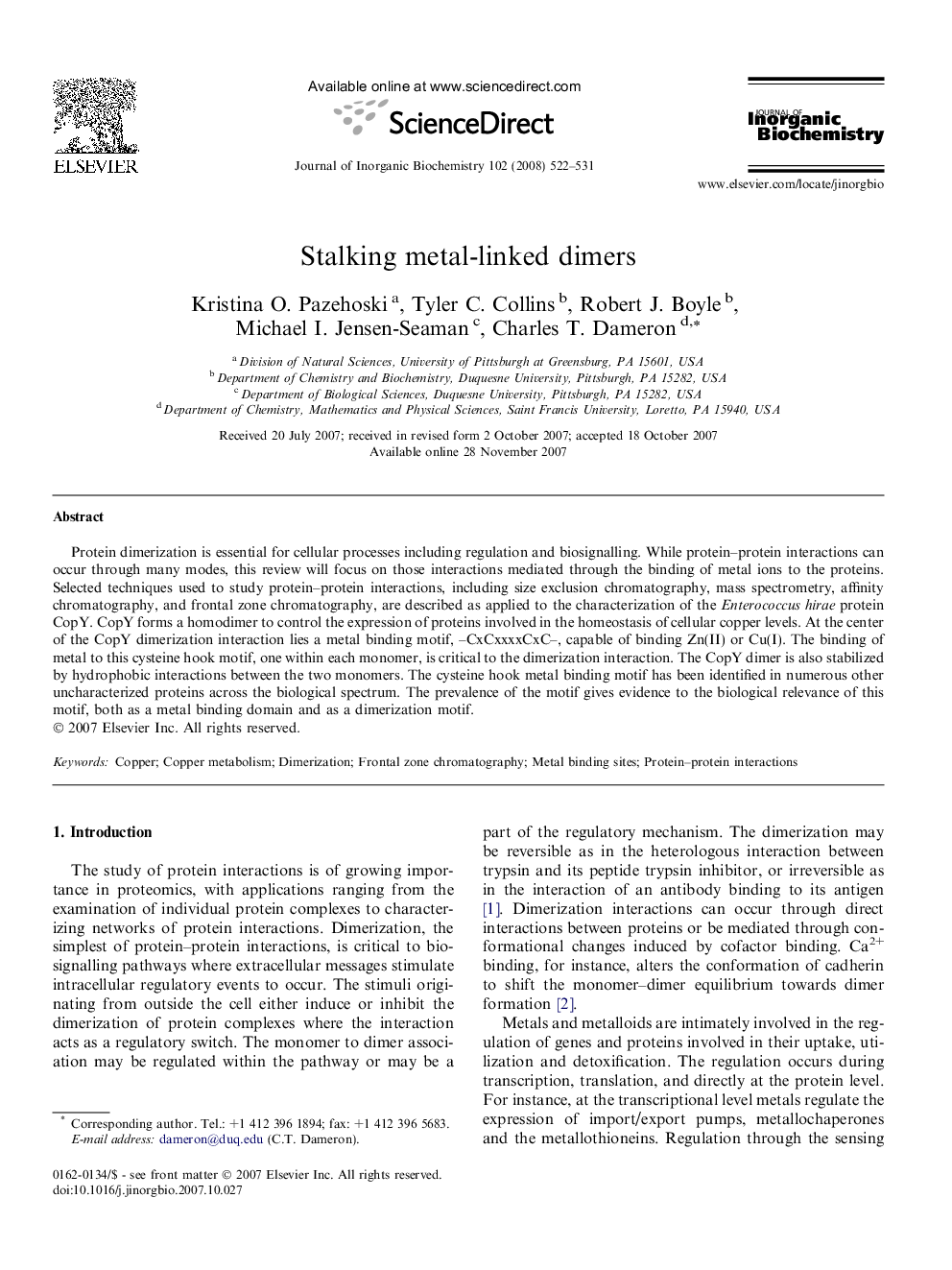| Article ID | Journal | Published Year | Pages | File Type |
|---|---|---|---|---|
| 1316680 | Journal of Inorganic Biochemistry | 2008 | 10 Pages |
Protein dimerization is essential for cellular processes including regulation and biosignalling. While protein–protein interactions can occur through many modes, this review will focus on those interactions mediated through the binding of metal ions to the proteins. Selected techniques used to study protein–protein interactions, including size exclusion chromatography, mass spectrometry, affinity chromatography, and frontal zone chromatography, are described as applied to the characterization of the Enterococcus hirae protein CopY. CopY forms a homodimer to control the expression of proteins involved in the homeostasis of cellular copper levels. At the center of the CopY dimerization interaction lies a metal binding motif, –CxCxxxxCxC–, capable of binding Zn(II) or Cu(I). The binding of metal to this cysteine hook motif, one within each monomer, is critical to the dimerization interaction. The CopY dimer is also stabilized by hydrophobic interactions between the two monomers. The cysteine hook metal binding motif has been identified in numerous other uncharacterized proteins across the biological spectrum. The prevalence of the motif gives evidence to the biological relevance of this motif, both as a metal binding domain and as a dimerization motif.
